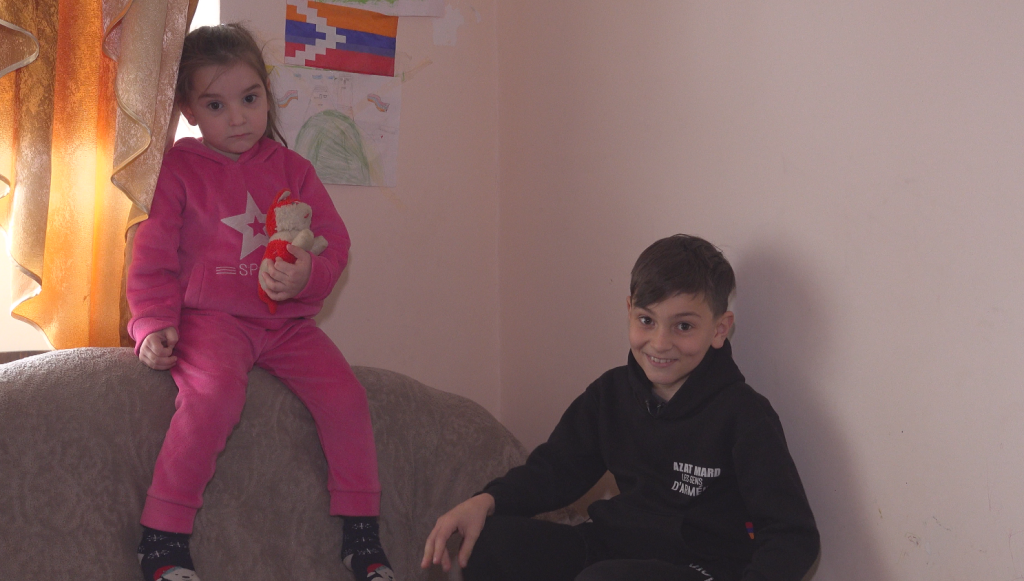By Zhanna Avagyan
“If the support is cut, many people will end up on the streets,” says Nanar Alaverdyan, whose five-member family now lives in Hrazdan after being forcibly displaced from Artsakh (Nagorno-Karabakh). Her husband is the only breadwinner and is mostly involved in construction.
Like thousands of other families who fled Artsakh following the 2023 Azerbaijani offensive and the subsequent ethnic cleansing of Armenians from the region, the Alaverdyans rely heavily on the monthly government assistance to survive. But that lifeline is about to be significantly reduced.
The Armenian government has announced that financial support for people forcibly displaced from Artsakh will be gradually reduced in the coming months. Starting April 1, the monthly payment will decrease from 50,000 ($125) to 40,000 ($100) drams, and will only be provided to specific categories:
- Children under 18 years old (about 33,000 people)
- People aged 63 and older (around 18,000 people)
- Individuals receiving benefits or pensions due to losing their breadwinner or those with first or second-degree disabilities (approximately 2,600 people).
This reduced payment will continue until June, which will further decrease to 30,000 drams ($75) beginning in July.
For most displaced families, government assistance barely covers rent and utilities, if at all. In Yerevan, where there are relatively more job opportunities but living costs are higher, the situation is difficult too.
Hermine Hayrumyan, a mother of three living in a rented apartment on outskirts of Yerevan, can only cover her rent with the government subsidy. She works 12 hours a day, but a significant portion of her earnings goes to a babysitter.
“As long as we at least receive enough for rent, we manage somehow. But managing means I hardly see my children because I leave early in the morning and come home late at night,” she explains.
The Ministry of Labor and Social Affairs justifies the cuts by pointing to the government’s housing certificate program for Artsakh refugees. However, many displaced persons say the certificates are inadequate.
“The amount provided by the certificate is so small that it’s impossible to buy an apartment with it,” Nanar says. “If I have to buy a dilapidated apartment and then spend 15-20 years working on it, I don’t see the point. It would be better if they built apartments and handed them over to people.”

She adds, “Even locals who have lived here for 30 years can’t solve their basic social issues. How can someone from Karabakh find a job within two years of living here that would cover all these expenses?”
Hermine has also considered using the certificate program but finds it nearly impossible. “With that amount, it might be possible to buy a house in very remote or border areas, but I can’t live there with my three children. It’s not just about fear, but the fact that I’m raising my children alone and I can’t live far away where there are no jobs.”

Homes in the provinces are more affordable, but jobs are scarce there. Additionally, many property owners refuse to sell their apartments in exchange for government certificates.
Even in Yerevan, where employment opportunities are better, displaced families still struggle with social challenges. The cost of living is high, and for those with children, childcare expenses consume a significant portion of earnings.
Lianna Petrosyan, a displaced community activist from Artsakh, has published recommendations for the Armenian government to better support the displaced population. She advocates for continuing the current support program indefinitely, reviewing beneficiary lists to include excluded families, and modifying housing assistance requirements. Petrosyan also calls for developing economic empowerment programs, creating more inclusive employment opportunities, supporting small businesses, and implementing clear social housing initiatives. “To ensure that forcibly displaced people from Artsakh have a long-term vision for their future in Armenia, to prevent the ever-increasing emigration, and to maintain the possibility of a unified return to Artsakh, realistic long-term programs must be developed,” Petrosyan writes. “These programs must first and foremost be needs-based and fully serve the interests of all displaced persons.”
The post Displaced families from Artsakh face mounting challenges as aid decreases appeared first on CIVILNET.